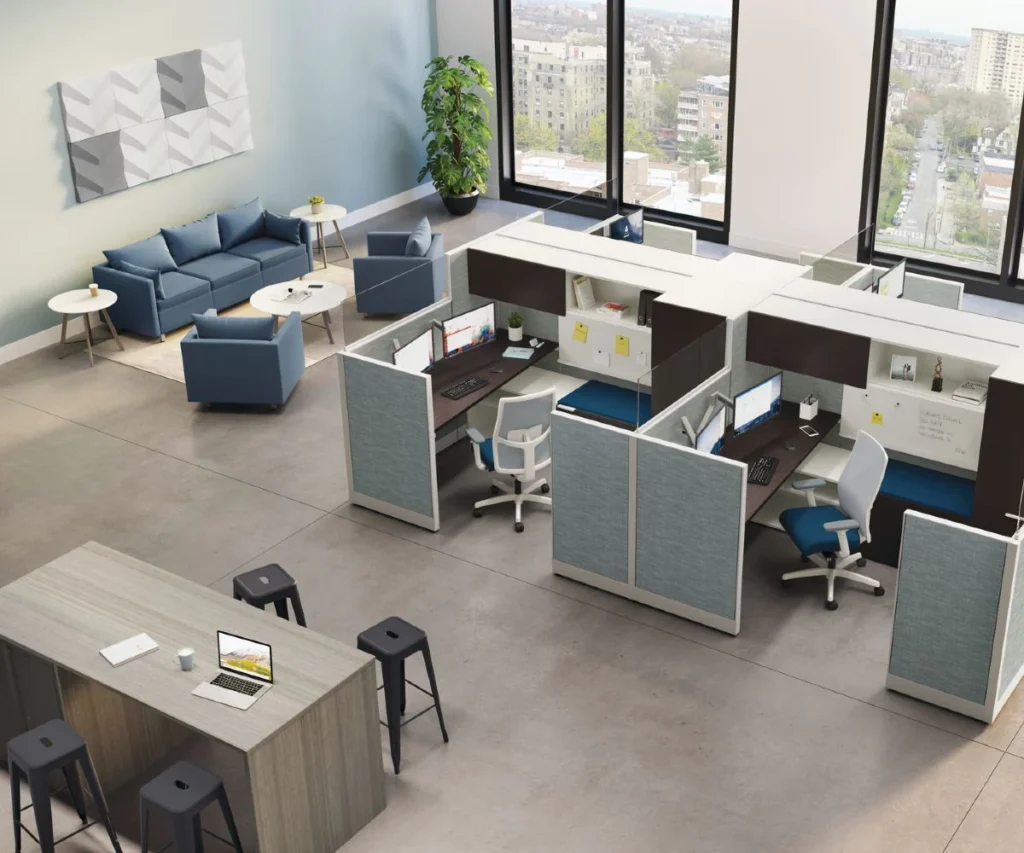In an era where environmental consciousness is gaining momentum, the need for sustainable practices extends beyond everyday activities to the very furniture we use. As organizations strive to adopt greener policies, office furniture, including chairs, is undergoing a transformation towards eco-friendly alternatives. This article explores the concept of sustainable seating, delving into the environmental impact of conventional office chairs and presenting a comprehensive guide to eco-friendly choices.
I. The Environmental Impact of Conventional Office Chairs:
A. Material Selection:
- Petroleum-Based Plastics: The prevalence of petroleum-based plastics in traditional office chairs contributes significantly to the depletion of fossil fuels.
- Metal Components: Steel and aluminum used in chair frames often involve energy-intensive extraction processes, contributing to greenhouse gas emissions.
B. Manufacturing Processes:
- Energy Consumption: Conventional manufacturing processes for office chairs often rely on energy-intensive methods, further increasing the carbon footprint.
- Waste Generation: High levels of waste, including offcuts and discarded materials, are common in traditional chair production.
C. Short Product Lifespan:
- Planned Obsolescence: Some office chairs are designed with a short lifespan, leading to frequent replacements and increased waste generation.
- Lack of Repairability: Repair options for traditional chairs are limited, promoting a throwaway culture.
II. Eco-Friendly Alternatives:
A. Sustainable Materials:
- Recycled Plastics: Chairs made from recycled plastics help reduce the demand for new raw materials and minimize plastic pollution.
- Bio-Based Materials: Plant-derived materials, such as bamboo and hemp, offer sustainable alternatives to traditional plastics.
B. Responsible Manufacturing:
- Energy-Efficient Processes: Manufacturers are increasingly adopting energy-efficient production methods to reduce the environmental impact.
- Closed-Loop Systems: Companies employing closed-loop systems aim to minimize waste by recycling and reusing materials throughout the manufacturing process.
C. Longevity and Repairability:
- Durable Design: Sustainable office chairs are often designed for longevity, reducing the need for frequent replacements.
- Modular and Repairable: Chairs designed with modular components and easy repairability promote a circular economy by extending the product lifespan.
III. Certification and Standards:
A. Forest Stewardship Council (FSC) Certification:
- Wood Sourcing: FSC certification ensures that wood used in chair production comes from responsibly managed forests.
- Chain of Custody: FSC-certified products provide transparency about the entire supply chain.
B. Cradle to Cradle (C2C) Certification:
- Circular Economy Approach: C2C certification focuses on designing products that can be fully recycled or safely composted at the end of their life.
- Material Health: C2C-certified products prioritize safe and healthy materials throughout the manufacturing process.
IV. Case Studies:
A. Herman Miller’s Embody Chair:
- Recycled Content: The Embody Chair incorporates recycled materials, reducing its environmental impact.
- Design for Disassembly: Herman Miller emphasizes a design that facilitates easy disassembly for recycling purposes.
B. Steelcase’s SILQ Chair:
- Minimalist Design: The SILQ Chair features a minimalist design, reducing the number of components and simplifying the manufacturing process.
- Sustainable Materials: Steelcase prioritizes sustainable materials, contributing to a more environmentally friendly product.
V. Employee Well-Being and Productivity:
A. Ergonomics and Comfort:
- Sustainable materials can be just as comfortable and ergonomic as traditional options.
- Design Innovation: Eco-friendly chairs often incorporate innovative design elements to enhance user comfort and well-being.
B. Employee Satisfaction:
- Corporate Social Responsibility: Organizations that invest in sustainable office furniture contribute to a positive corporate image, enhancing employee satisfaction.
- Health and Wellness: Eco-friendly seating options can support employee health and well-being, contributing to increased productivity.
Conclusion:
As the business world shifts towards sustainability, the choices we make in office furniture, particularly seating, play a crucial role in minimizing our environmental impact. From material selection to manufacturing processes and end-of-life considerations, adopting eco-friendly office chairs is not only a responsible choice for the planet but also a step towards creating healthier and more productive workspaces. By exploring the environmental impact of conventional chairs and showcasing innovative and sustainable alternatives, organizations can make informed decisions that align with their commitment to a greener future.


